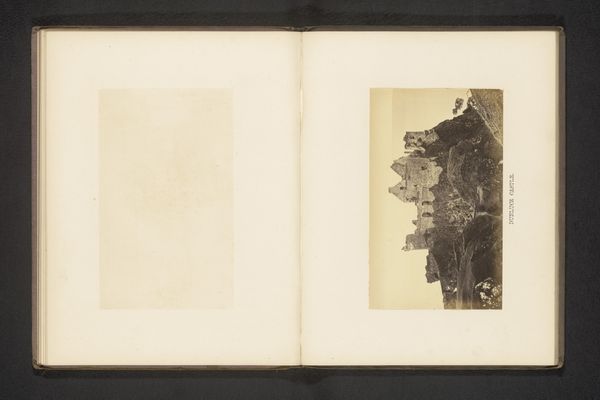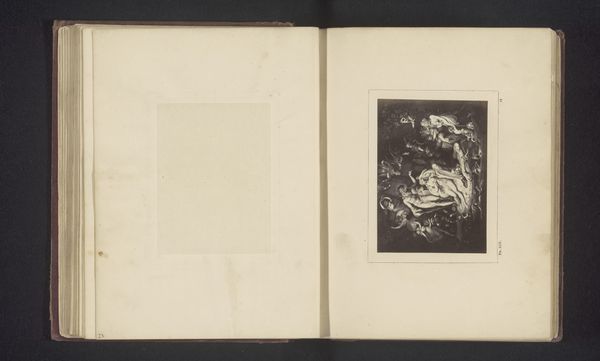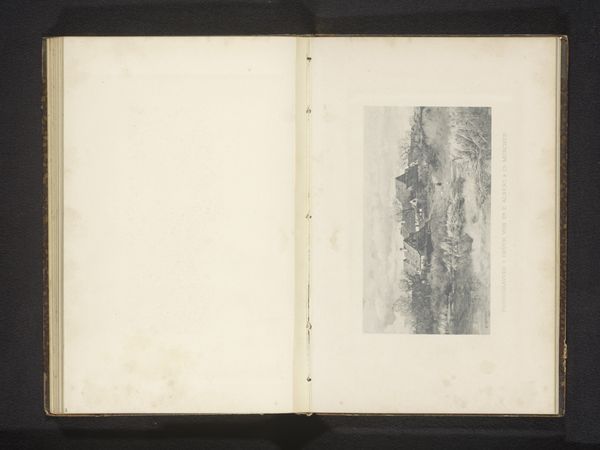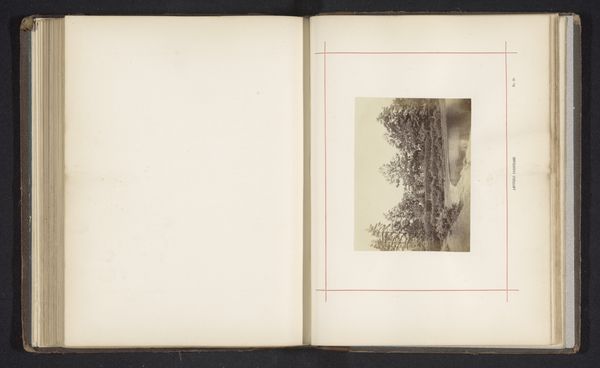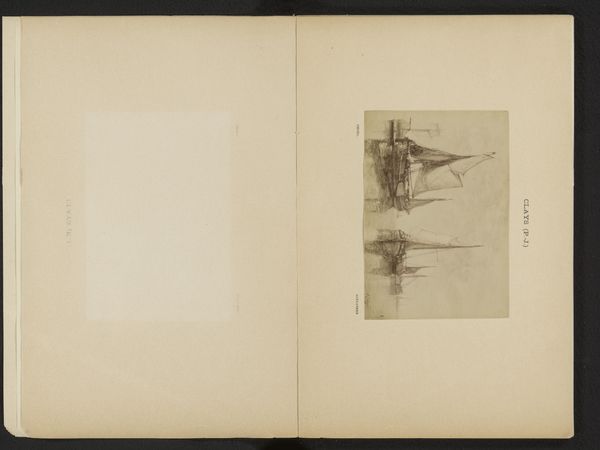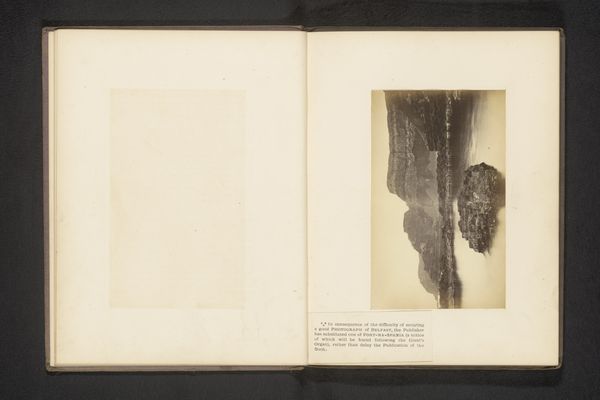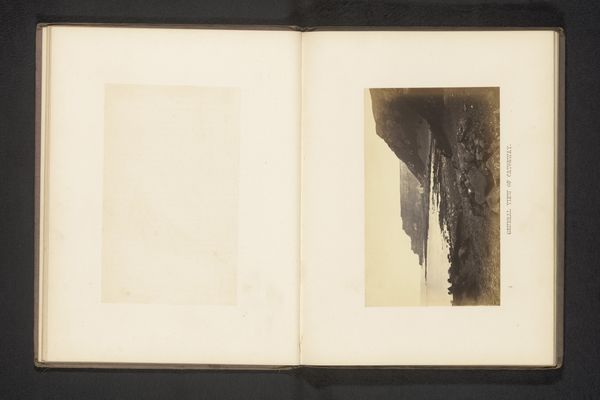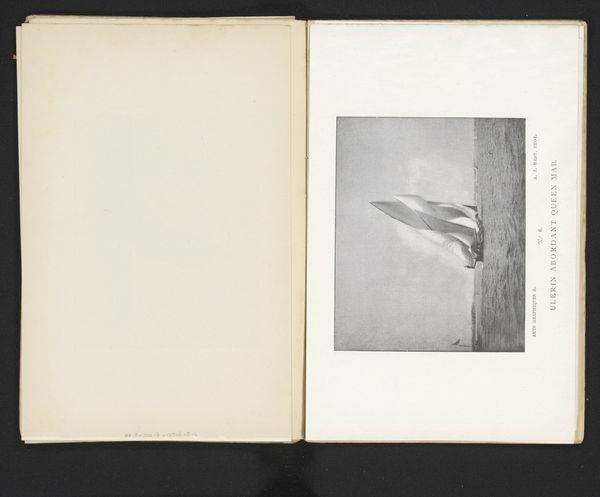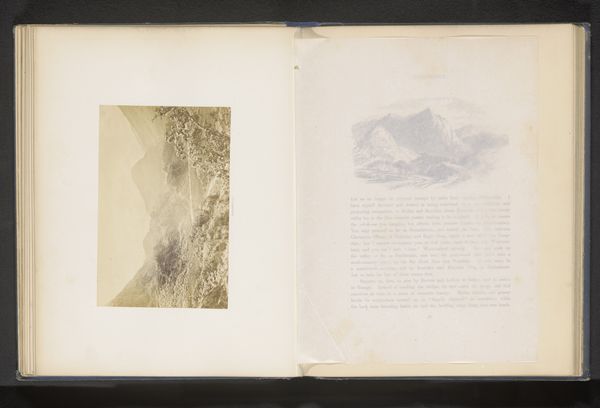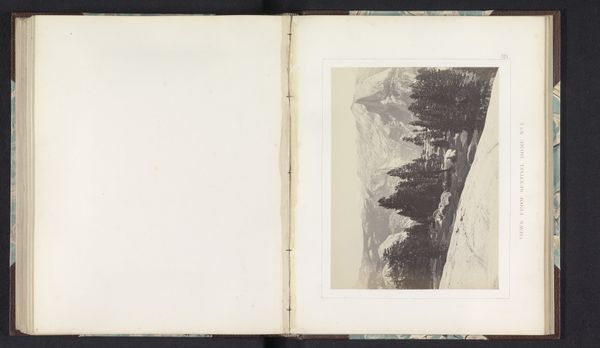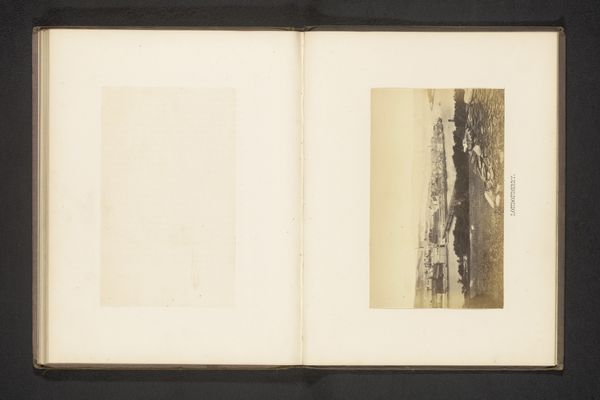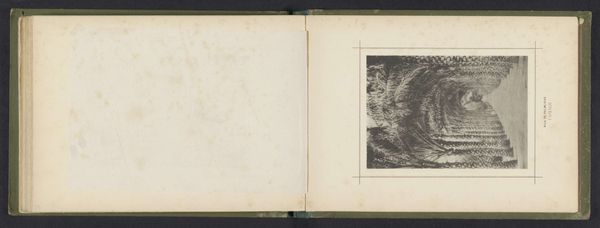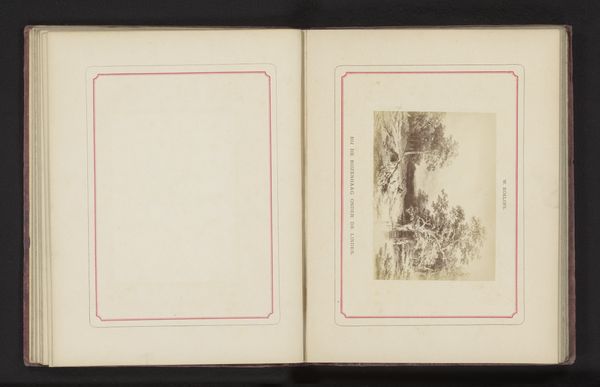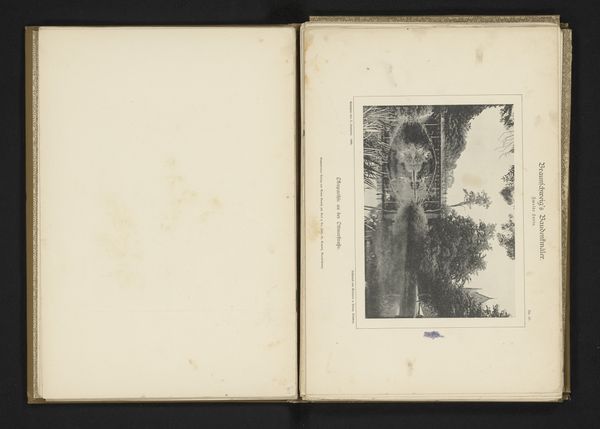
drawing, print, paper, photography
#
drawing
# print
#
landscape
#
paper
#
photography
#
coloured pencil
#
genre-painting
#
watercolor
Dimensions: height 69 mm, width 69 mm
Copyright: Rijks Museum: Open Domain
Curator: Here we have "Zeilboot op het water" – that's "Sailboat on the Water" – attributed to J. et Ce Thévoz, dating from before 1891. It seems to combine drawing, printmaking, and even elements of photography on paper. My initial impression is that it’s a study of contrasts – we have a monochrome sailboat alongside what looks like a more ethereal, color-tinted mountain scene. Editor: Indeed. I see that. But look closely – it isn’t simply “on paper.” Note the careful crafting of the photograph adhered onto the album page, its positioning, and how it functions within this specific visual framing. How do we understand the production and consumption of such imagery at that time? Curator: That's a fair point. Consider that the use of photography allows for a certain realism in capturing the ship, documenting its precise structure, and how the sails catch the wind. This stands in opposition to the mountain’s looser rendering that embraces a certain ambiguity. I see the sailboat on its own as perhaps emblematic of commerce, naval power... Editor: Or perhaps something about individual artistry and technological development and the markets that enabled artists to share their work more widely? How did exhibitions of photography, like the type on display, gain recognition? Who were its consumers, and what did possessing such an image mean to them within their social milieu? Curator: Well, regardless of all that it represents, I appreciate how the images offer two contrasting landscapes, or perhaps modes of experience, displayed harmoniously within the album’s confines. The print medium suggests reproducibility, accessibility... almost a democratic spirit. It would have granted the beholder the chance to turn back again and again. Editor: I would also suggest this placement highlights questions of artistic labor, and the role albums played in visualizing cultural identities. The material choices – photography mixed with traditional print and drawing techniques, also bring a certain focus on production to these albums as artistic objects in and of themselves. Curator: Ultimately, viewing "Sailboat on the Water," whether as art or document, brings one back to thinking of vastness of water versus rock, wind, versus mass – forces which have molded continents and guided empires and trade. And, I would submit that, even today, as they propel individual reflection. Editor: I’d also agree that the piece offers a look into an historical moment of cultural exchange, technological adaptation, and the democratization of visual media. Understanding those historical trends helps us evaluate not just individual aesthetics, but the social structures that made these aesthetic experiences possible and the albums they appeared in more relevant.
Comments
No comments
Be the first to comment and join the conversation on the ultimate creative platform.
